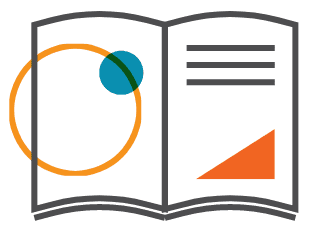The world of retirement planning is poised for significant changes with the implementation of the SECURE 2.0 Act. This legislation is an extension of the original SECURE Act, which introduced a host of provisions designed to enhance retirement security for Americans. While some provisions were implemented in 2023, there are a few that take effect in years to come. The year 2024 is significant, as several key provisions that may impact your IRA are set to take effect. While these may not be all of the provisions to be aware of, they are certainly ones to discuss with an advisor as you plan for upcoming tax years.
Understanding the SECURE 2.0 Act
The SECURE 2.0 Act, formally known as the “Setting Every Community Up for Retirement Enhancement Act 2.0,” builds upon the original SECURE Act that was passed in 2019. Its primary mission is to address evolving retirement needs and challenges faced by Americans. This legislation also sought to encourage more of the workforce to save for retirement.
The SECURE 2.0 Act was passed in 2022 and features a number of provisions you’ll want to be aware of as you plan for 2024:
Provision 1: Extending the Age for Required Minimum Distributions (RMDs) (Section 107)
One of the hallmark provisions of the SECURE 2.0 Act going into effect in 2024 is the adjustment to the age at which to begin taking Required Minimum Distributions (RMDs) from retirement accounts. Previously, RMDs typically commenced at age 72. However, under the new legislation, RMD age increased to 73 in 2023. The SECURE 2.0 Act will increase the age to 75 by the year 2033.
This extension provides self-directed IRA investors with a more extended window for tax-advantaged growth before mandatory distributions kick in. It’s great news for those who may have had a late start in preparing for retirement, or those who haven’t quite reached their financial goals.
Provision 2: Enhanced Catch-Up Contributions for Older Workers (Sections 108, 109)
In 2024, the SECURE 2.0 Act increases catch-up contribution limits for individuals aged 60 and older. Catch-up contributions enable investors to contribute additional funds to their IRAs, which can significantly benefit self-directed IRA investors in this age group. These extra contributions can be directed toward alternative investments, such as real estate or precious metals, within self-directed IRAs.
If you’re age 50 or older, you’ll be able to make a $7,500 catch-up contribution to your workplace plan. In 2025 this amount will increase to $10,000 for those over the age of 60.
Under section 108, the catch-up limits will be indexed to inflation starting in 2024. This means the limit could change year over year based on cost of living. We recommend consulting your financial advisor or tax professional to determine just how much to contribute to your IRA each year.
Provision 3: Penalty-Free Distributions for Specific Expenses (Section 115)
Another notable change taking effect in 2024, introduces the option for penalty-free distributions from IRAs to cover specific expenses. The SECURE Act will allow IRA holders to withdraw funds for unplanned medical expenses, federally declared disasters, domestic abuse recovery, long term care for terminally ill, and more. Account holders will have the option to repay the distribution but will not be allowed to take additional emergency distributions during the repayment period.
Although not directly linked to self-directed IRA investments, this provision offers additional financial flexibility for IRA holders, enabling them to navigate unexpected life events and utilize their hard-earned savings during difficult times.
Provision 4: Enhancements to Education Savings Plans
One of the significant changes introduced by the SECURE 2.0 Act is the ability to roll over funds from a 529 education plan into a Roth IRA. This provision offers an exciting opportunity for families who have 529 plans and are looking for more flexibility in how they use those funds. Previously, if you needed to access unused funds in a 529 plan, you had to take a nonqualified withdrawal with a penalty.
In 2024, 529 plan beneficiaries can rollover $35,000 (lifetime limit) of unused funds into a Roth IRA penalty free. There are a few stipulations to be aware of before moving funds. First, the rollovers are subject to annual Roth contribution limits. Second, the 529 account has to be open for at least 15 years before moving funds. This means that if you’ve saved money in a 529 plan for education but end up not needing the entire amount, you can put those funds towards retirement.
Optimizing Your Self-Directed IRA Strategy
As the SECURE 2.0 Act ushers in these transformative changes, you may consider strategies for optimizing your self-directed IRA investments:
Leveraging the Extended RMD Age
The increase in the RMD age provides self-directed IRA investors with more time for tax-advantaged growth. It may be beneficial to review your distribution strategy and investment horizon in light of this change.
Maximizing Catch-Up Contributions
If you’re 60 or older, it may be worthwhile to take full advantage of the increased catch-up contribution limits. These additional funds can fuel your self-directed IRA investments, potentially diversifying your portfolio further.
Planning Long Term
The new provisions for early distributions to cover unplanned expenses adds an additional component to consider in long term planning. These provisions could be critical for those planning for upcoming life events or planning for emergency funds. Familiarize yourself with the expenses eligible for penalty-free distributions, especially long-term care costs. Include these considerations in your retirement planning strategy. Additionally changes to RMDs and catch-up contributions may call for a longer-term plan than 1-5 years, or even reassessing current plans.
The SECURE 2.0 Act is set to bring significant changes to IRAs in 2024. These modifications offer increased flexibility and extended periods of tax-advantaged growth for select account holders. Some changes may make it easier plan and prepare for retirement and other potential life events. To make the most of these changes, it’s essential to stay informed and consult with financial advisors or tax professionals. By leveraging these provisions, you may be able to enhance your retirement planning and secure a brighter financial future.
Please note that the contents of this blog are accurate as of the date of publication and are provided for informational purposes only. They are not intended, and should not be construed, as financial, legal, or other professional advice. Readers are encouraged to perform their own due diligence and should always consult a qualified financial professional before making any investment decisions.


 Back to Blog
Back to Blog

